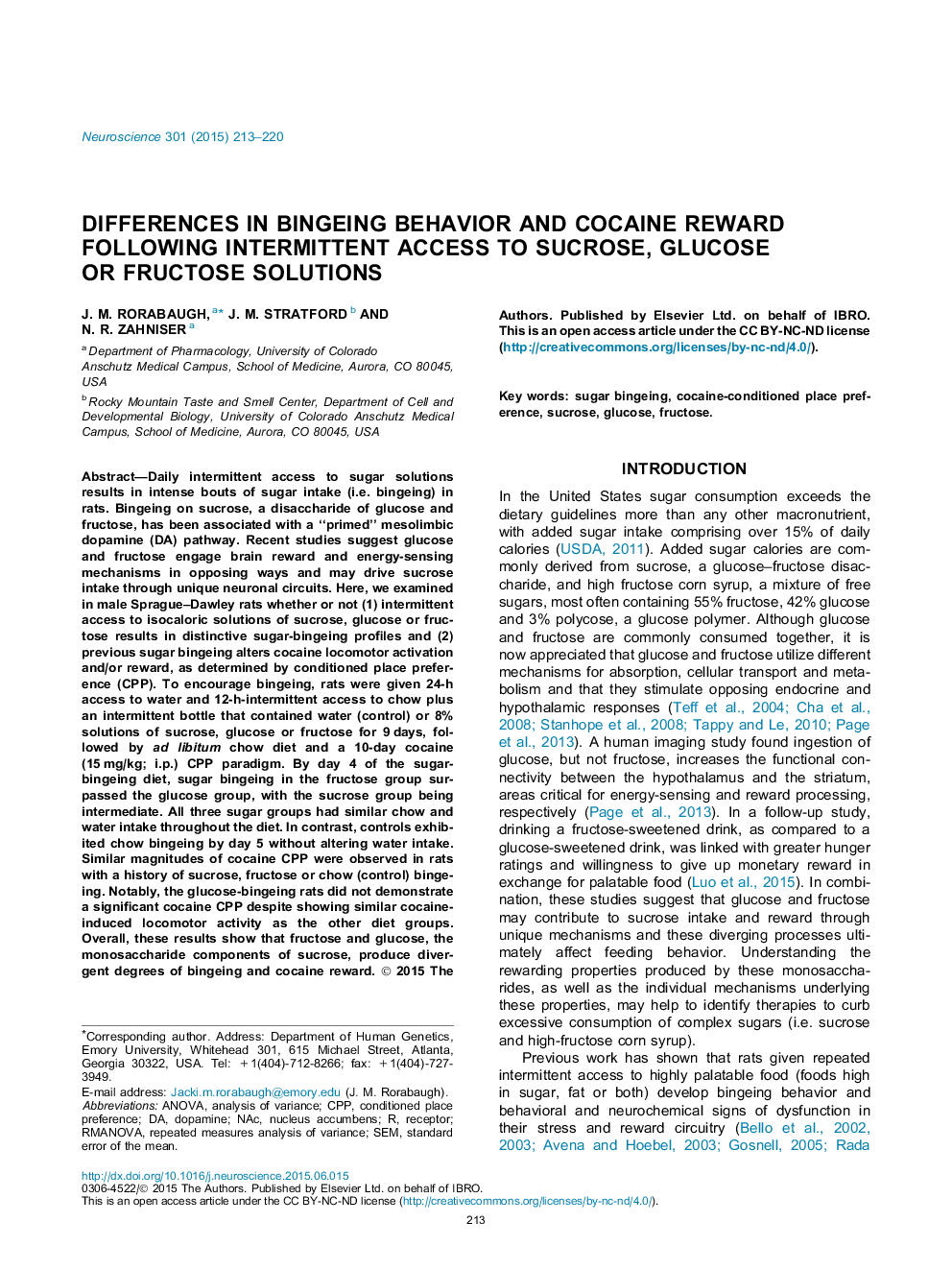| کد مقاله | کد نشریه | سال انتشار | مقاله انگلیسی | نسخه تمام متن |
|---|---|---|---|---|
| 6272107 | 1614775 | 2015 | 8 صفحه PDF | دانلود رایگان |
- Intermittent access to an 8% sugar solution produces fructose bingeing â sucrose bingeing > glucose bingeing.
- Overall daily (12Â h) sugar and chow intake was comparable between sucrose, glucose and fructose groups.
- Previous glucose, but not sucrose or fructose, bingeing blocked cocaine CPP but not cocaine-induced locomotor activity.
Daily intermittent access to sugar solutions results in intense bouts of sugar intake (i.e. bingeing) in rats. Bingeing on sucrose, a disaccharide of glucose and fructose, has been associated with a “primed” mesolimbic dopamine (DA) pathway. Recent studies suggest glucose and fructose engage brain reward and energy-sensing mechanisms in opposing ways and may drive sucrose intake through unique neuronal circuits. Here, we examined in male Sprague-Dawley rats whether or not (1) intermittent access to isocaloric solutions of sucrose, glucose or fructose results in distinctive sugar-bingeing profiles and (2) previous sugar bingeing alters cocaine locomotor activation and/or reward, as determined by conditioned place preference (CPP). To encourage bingeing, rats were given 24-h access to water and 12-h-intermittent access to chow plus an intermittent bottle that contained water (control) or 8% solutions of sucrose, glucose or fructose for 9Â days, followed by ad libitum chow diet and a 10-day cocaine (15Â mg/kg; i.p.) CPP paradigm. By day 4 of the sugar-bingeing diet, sugar bingeing in the fructose group surpassed the glucose group, with the sucrose group being intermediate. All three sugar groups had similar chow and water intake throughout the diet. In contrast, controls exhibited chow bingeing by day 5 without altering water intake. Similar magnitudes of cocaine CPP were observed in rats with a history of sucrose, fructose or chow (control) bingeing. Notably, the glucose-bingeing rats did not demonstrate a significant cocaine CPP despite showing similar cocaine-induced locomotor activity as the other diet groups. Overall, these results show that fructose and glucose, the monosaccharide components of sucrose, produce divergent degrees of bingeing and cocaine reward.
Journal: Neuroscience - Volume 301, 20 August 2015, Pages 213-220
